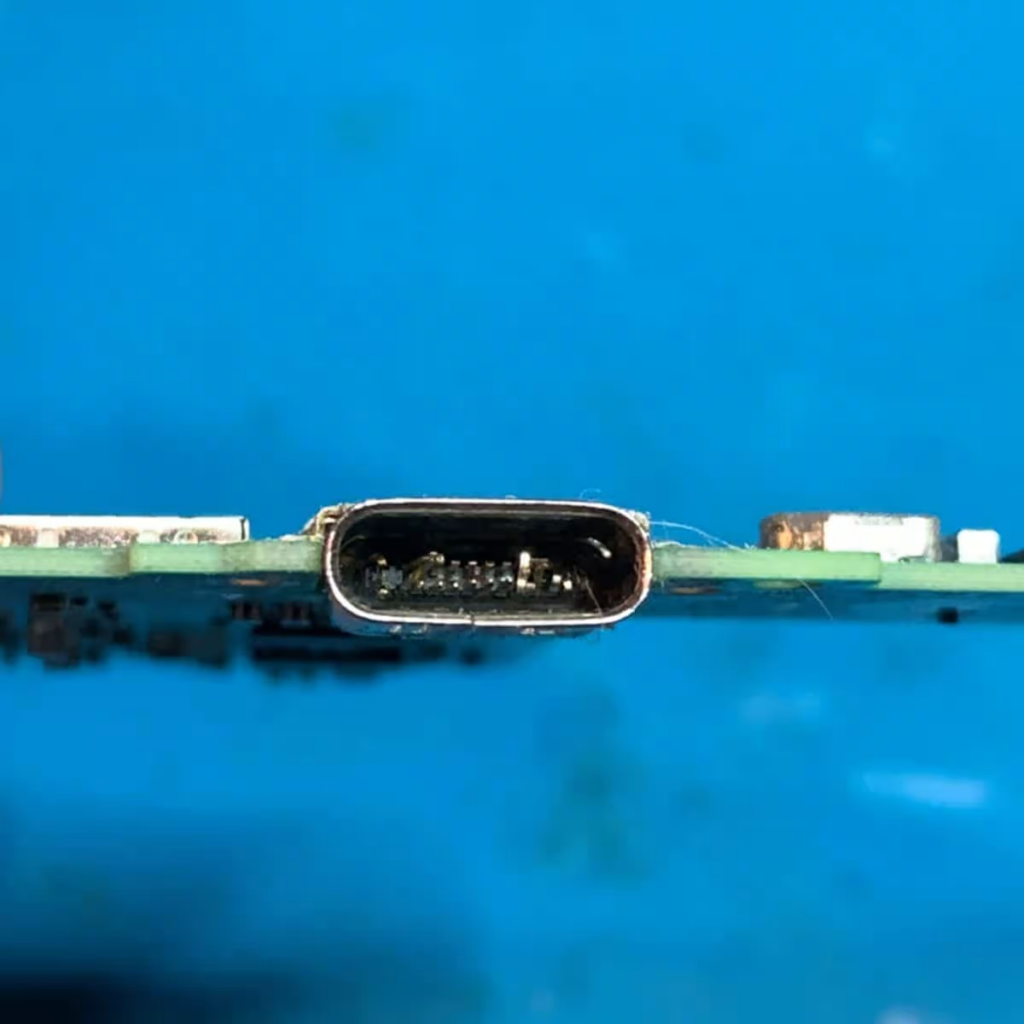Identifying the Problem
Before attempting a repair, it’s important to confirm the issue with the USB-C connector. Common symptoms of a damaged connector include:
- Loose connection: The cable no longer stays securely in the port.
- Intermittent connection: The connection works only sometimes, causing unstable charging or data transfer.
- Physical damage: Visible wear, bending, or broken pins in the USB-C connector.
If the cable is working intermittently or the damage is minimal, you may be able to fix the connector. However, if the damage is severe, such as completely broken or missing pins, replacement is likely the best option.
Tools You’ll Need
- Small precision screwdriver set
- Soldering iron and solder (if repairing internal connections)
- Heat shrink tubing or electrical tape for insulation
- Wire cutters and strippers
- Super glue or epoxy (for external casing damage)
Step-by-Step Repair Process
1. Inspect the Connector
The first step in the repair process is to carefully inspect the USB-C connector. Look for any physical damage to the plastic casing or metal pins. If the cable has been bent or twisted excessively, this could have led to internal damage.

2. Open the Connector Housing
Using a precision screwdriver, gently pry open the housing of the USB-C connector. Be careful not to break the plastic or damage any internal components.
3. Examine the Internal Wires
Once you’ve opened the housing, inspect the internal wires. Look for any loose, frayed, or disconnected wires. If a wire is disconnected or damaged, it will need to be reattached or replaced.
4. Soldering (If Necessary)
If a wire or pin is loose, you may need to re-solder it. Heat the soldering iron and use it to melt the solder at the damaged connection, then reattach the wire or component. Ensure that the solder joints are secure but avoid using too much solder, as this can cause short circuits.
5. Reassemble the Connector
Once you have repaired the internal wiring or fixed the loose pins, carefully close the housing. If the casing was damaged, you can use super glue or epoxy to seal it back together. Alternatively, heat shrink tubing can be used to reinforce the connector and prevent further damage.
6. Test the Cable
After reassembling the connector, plug the cable into a device to test its functionality. Check for stable charging or data transfer. If the cable works as expected, the repair has been successful.
When to Replace the Cable
While repairing a USB-C connector is possible, it’s important to understand that the process may not always fully restore the cable’s original performance. In cases where the damage is extensive, or if the repair doesn’t work, replacing the cable is often the most reliable solution. High-quality replacement cables are available from trusted brands such as Anker and Aukey, which offer durable, high-speed USB-C cables.
If you find that your cable consistently faces damage or wear, it may be a sign to invest in a more durable or reinforced cable. Some USB-C cables come with braided exteriors or strengthened connectors designed to withstand frequent use and bending.
Preventing Future Damage
To prevent further damage to your USB-C cables, here are some helpful tips:
- Avoid bending the cable sharply: Over time, bending a cable at extreme angles can break internal wires and damage the connector.
- Use cable organizers: This prevents the cable from tangling or experiencing unnecessary tension.
- Store cables properly: Avoid placing cables under heavy objects or in locations where they may be pinched or stepped on.
- Invest in high-quality cables: Consider purchasing cables with reinforced connectors or braided exteriors, which are more durable.
By following these tips and taking care when handling your USB-C cables, you can extend their lifespan and prevent future damage.
Also Read : How to Fix Water in Your Microphone
]]>